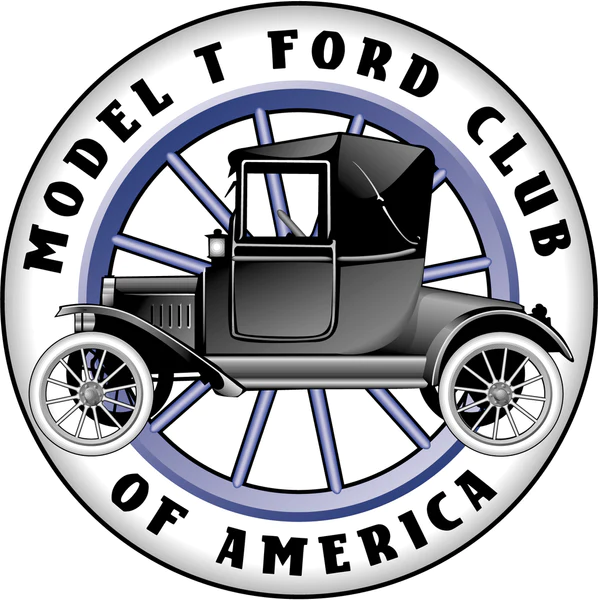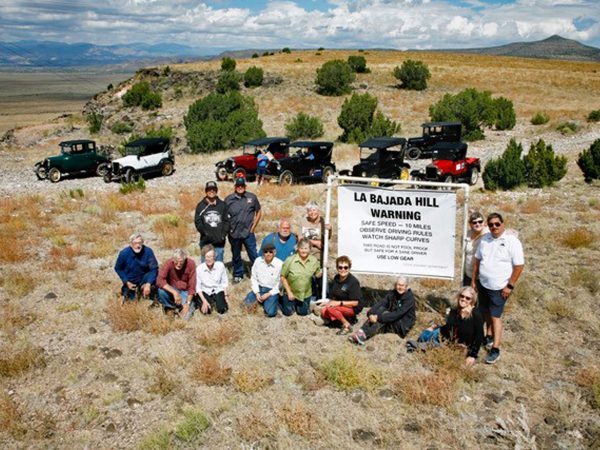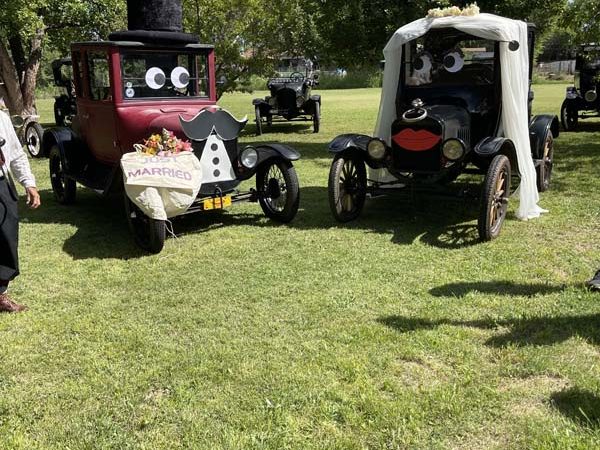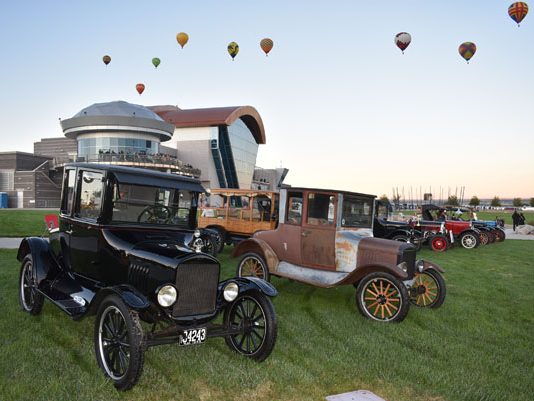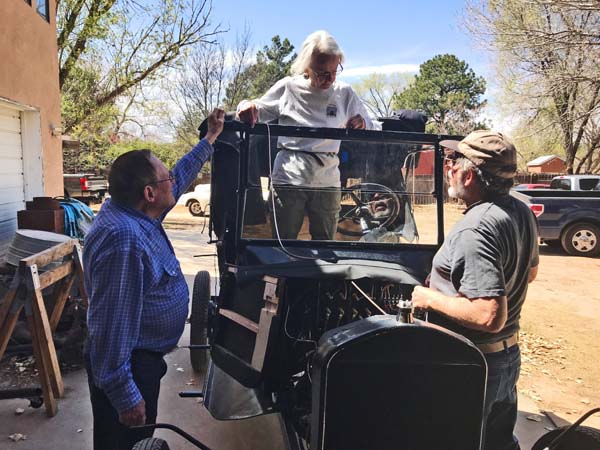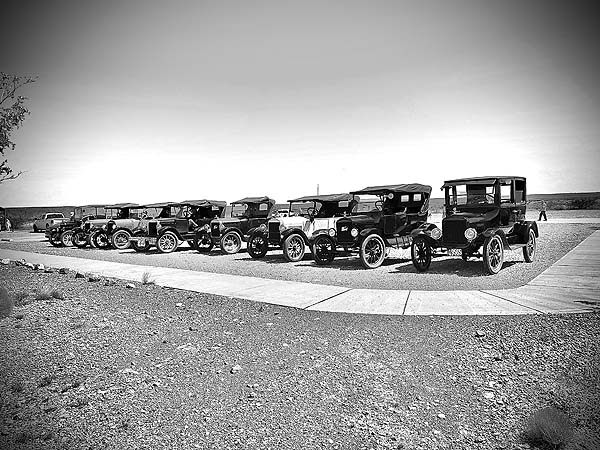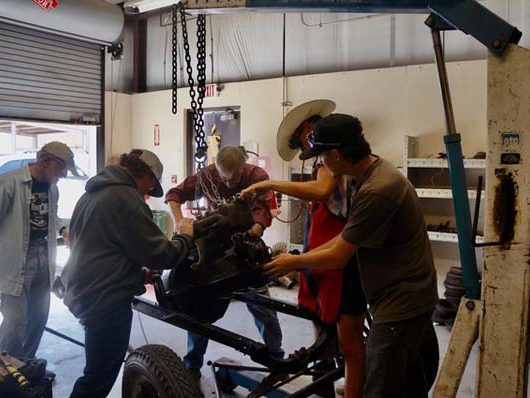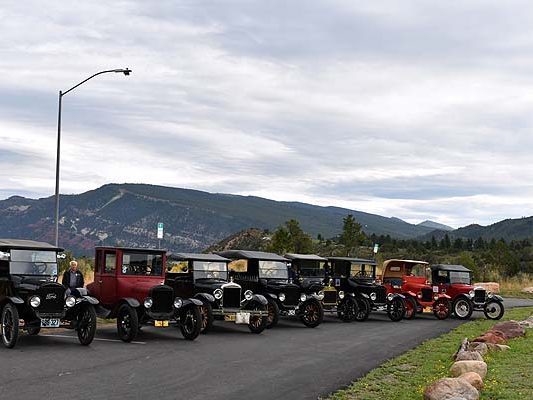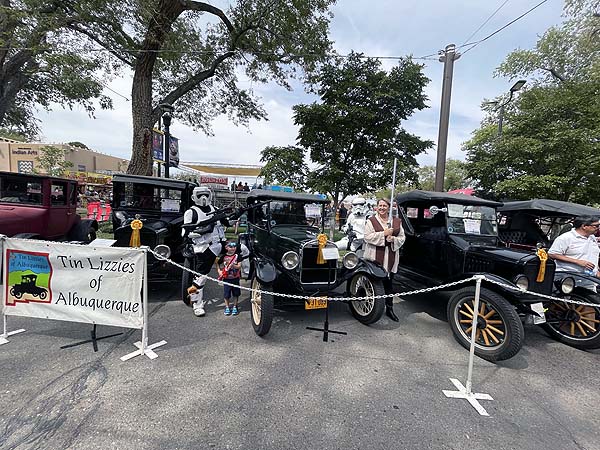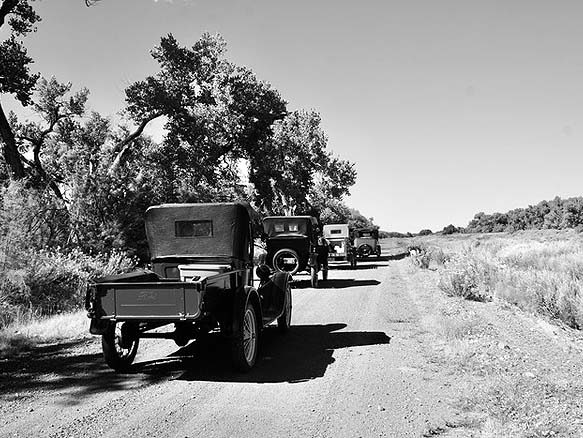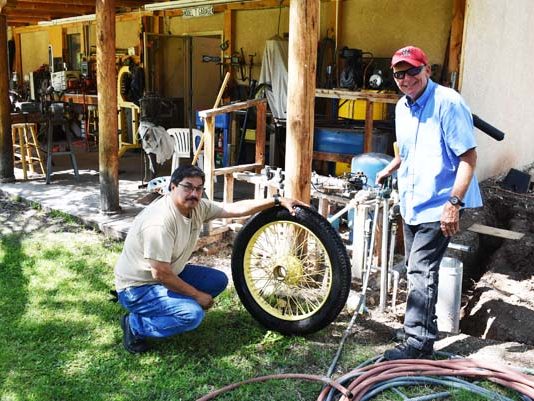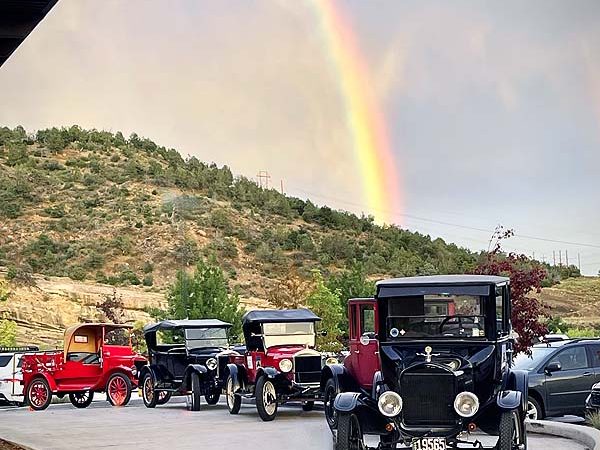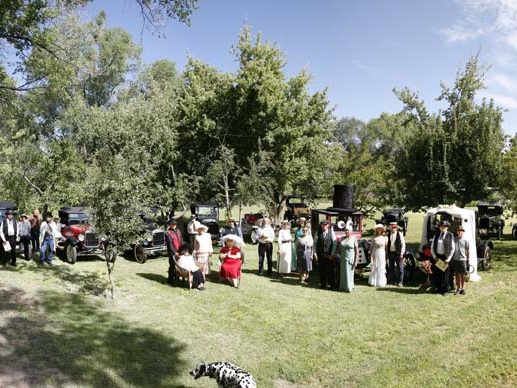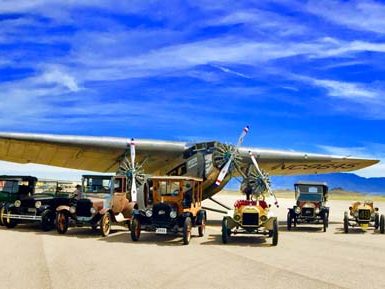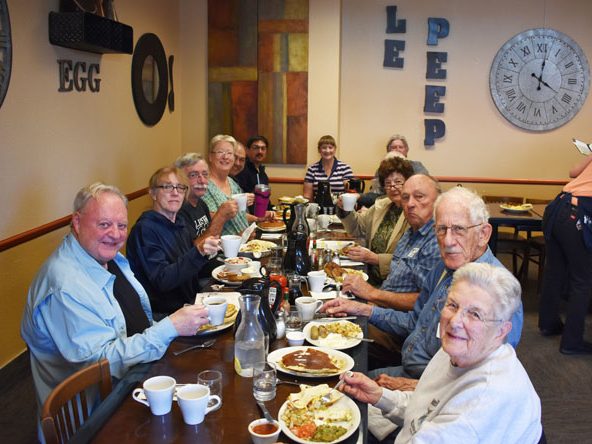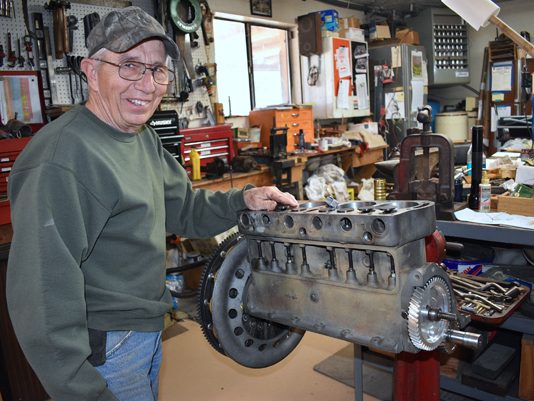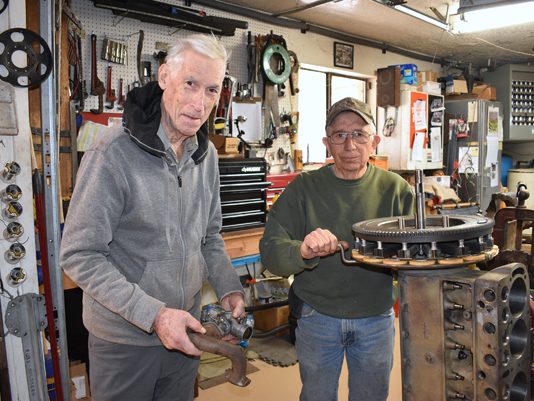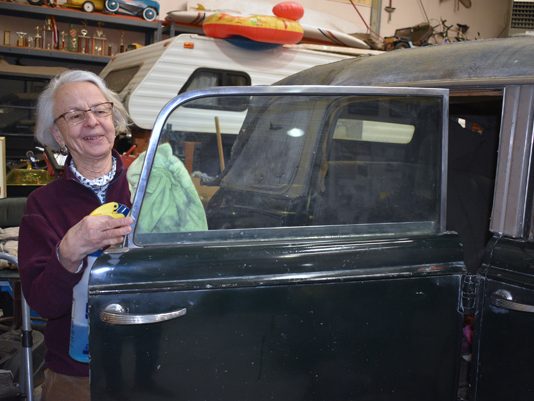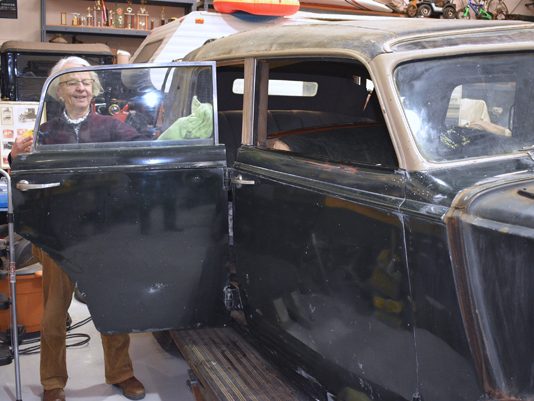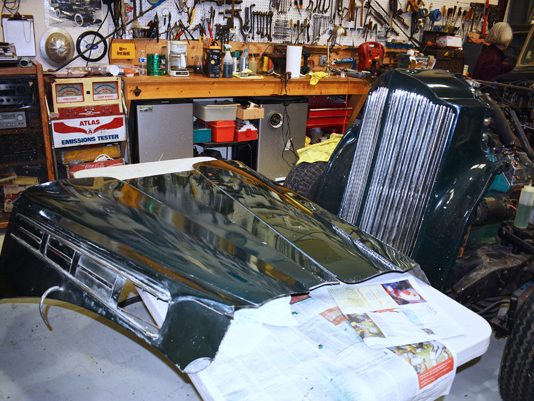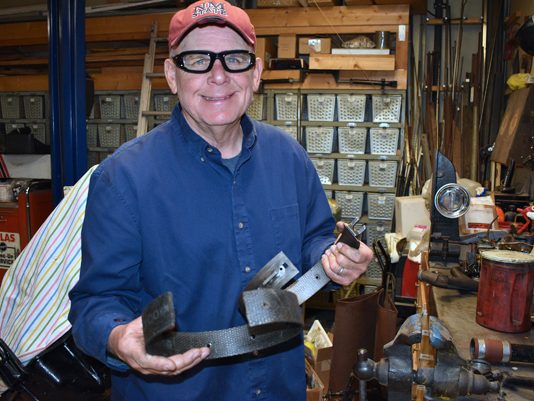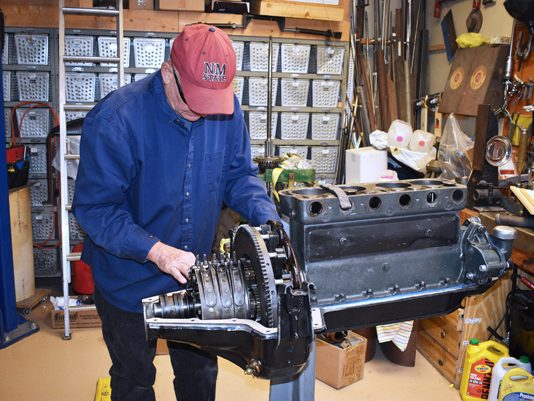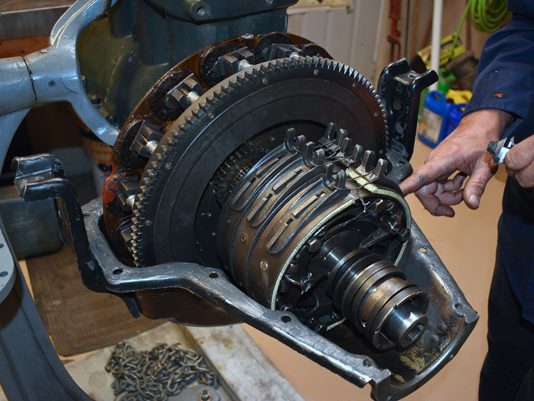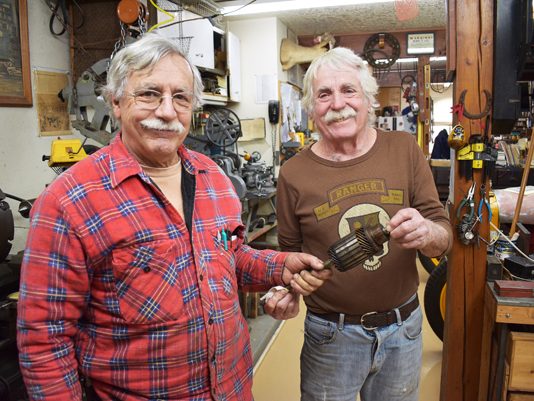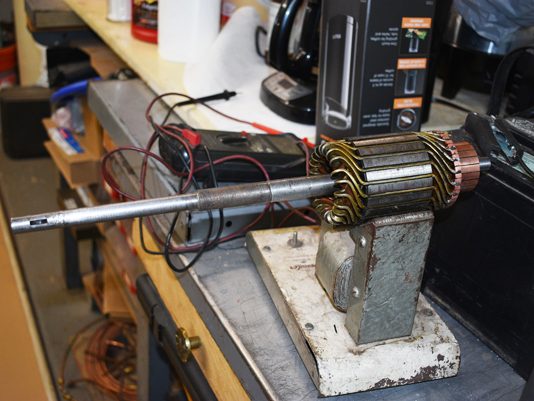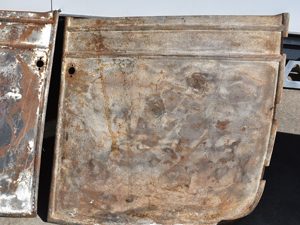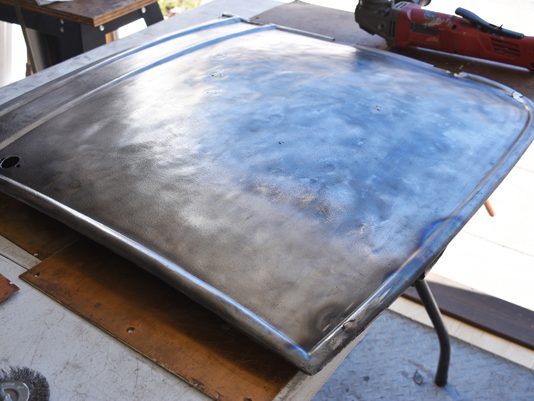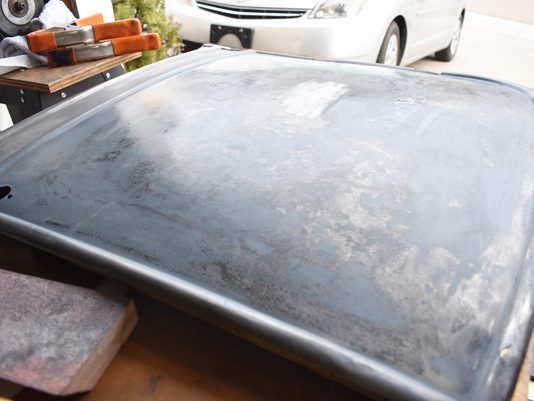Story and photos by Mark Wing
On this Saturday’s work party Frank Lewark continued working on his 1924 speedster engine and was adjusting the valves. He’s making great progress!
Marilyn Duncan was cleaning the glass on the Azevedo’s very rare 1938 V12 Packard Touring Cabriolet. She had also vacuumed the top (a rubberized canvas) and was treating it with a fine brush with a liquid cleaner. Al Schwanke wasn’t present this day, but he has been working on the Packard’s original paint. In addition to polishing, Al is color matching and infilling areas of paint loss. The results have been very impressive! Recently too, the V12 engine was started and the Packard driven a couple of feet to test the clutch. The engine runs very smoothly and should be road worthy soon!
Kirk Peterson continued working on his 1926/27 engine for the upcoming Montana 500 race. The engine will be installed in “Buster”, Kirk’s 1925 Model T coupe. On this day, Kirk was installing the transmission bands and mounting the hogshead. This year marks the 60th annual Montana 500 race hosted in Helena, Montana. The endurance run days are June 22nd – 24th. Kirk and Larry have been very focused on finishing the engine and exploring ways to make the stock coupe run better/faster within the strict Montana 500 race rules.
Montana 500 links:
http://www.antiqueautoranch.com/montana500/indexnonrefresh.html
https://en.wikipedia.org/wiki/Montana_500
Jim Glover continued working on a starter for his 1923 runabout. Unfortunately, a test showed that the starter armature that Jim was trying to restore was shorted out.
Mark Wing spent the work day media blasting the door skins for the 1915 Coupelet project. Larry’s blast cabinet was needed to remove the rust in creases and crevices on the back side of the panels. Once home, the rippled door skins were worked with 4-inch and 9-inch diameter “shrinking discs” mounted on a grinder. These discs came from Wolfes Metal Fabrication (see link below) but are also available from suppliers like Eastwood. The stainless steel discs heat the high spots via friction. Once hot, the metal is quenched with cool soapy water causing the hot metal to selectively shrink. This technique worked surprisingly well and, given enough time and patience, very little body filler will be needed before painting.
Click on this link for Wolfes Metal Fab shrinking disc demonstration
